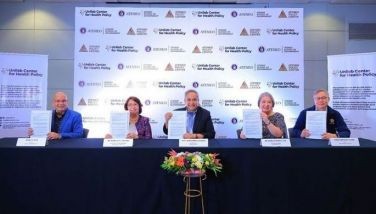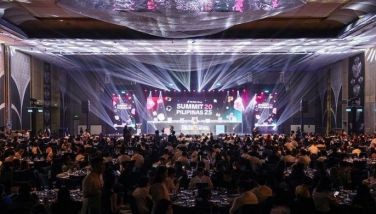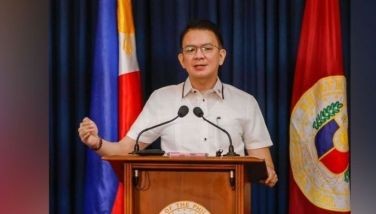Sports an engine for development
It’s a day before the 116th anniversary of Philippine Independence. It should be a day of rejoicing. It should be a day of recalling, looking at the past, in order to understand the present and of looking forward.
The Philippines had declared independence from the Spanish empire, its colonizer of 377 years. Emilio Aguinaldo and his allies and their combined troops had the Spaniards on the verge of defeat but who were unwilling to surrender to the “inferior†brown-skinned Indios.
Enter the United States of America which had its own war with Spain. Cuba was one of the theaters of the Spanish-American war. The conflict spread to the Philippines with the Americans “unwillingly†colonizing “the Islandsâ€. The Americans and the Spaniards waged an “acoustic war†that was meant to show the Filipinos that the Americans fought hard to capture “the Islands†from the Spaniards in a legitimate war. Unknown to the Filipinos, Spain and the United States of America had entered into a deal that called for the former to surrender to a fellow Caucasian, rather than to the uncivilized natives.
The Filipinos, on the other hand, entered into an “agreement†with the Americans that they would help the latter drive out the Spaniards from the Philippines in exchange for full control of the country at some designated imminent time. The Americans had negotiated with both sides and ended up with the Islands after paying US$20 million to Spain. The Filipinos were left out in the cold and soon revolted. The Philippine-American war was a savage and bloody one with the Americans using their then most modern weaponry (like the .30-40 Krag rifle and later on the .45 colt) while the Filipinos had to make do with rudimentary weapons.
Thousands died in that brief Philippine-American war but not much of it was mentioned in Philippine history books obviously to manage Filipino emotions that could endanger the country’s new rulers. Aguinaldo was locked up in jail by the Americans and all dissent was promptly stifled.
By the turn of the century, the American way of life had already made inroads into Philippine culture, ready to displace the heavily Catholic influence of its previous colonizers. A boat, the USS (United States Ship) St. Thomas, arrived in the Philippines and on board the boat were Protestant missionaries, educators, businessmen and plain adventurers who sought new opportunities. The passengers on the boat became to be collectively known as “The Thomasitesâ€. They were an educated and accomplished lot, having come from institutions of higher learning such as Princeton and Yale.
In no time, the Protestant missionaries went as far south as Dumaguete setting up Silliman University and later on churches and schools up north, mainly Baguio City. With their presence up north, it was only natural for the Americans to construct the Kennon Road and other main arteries all over the county.
As is often stated, the Spaniards brought Catholicism while the Americans exported to the Philippines, American style education, the public school system, Coca-Cola and other aspects of American life that Filipinos adopted with great enthusiasm after centuries of conservative and convent-like life under Spain.
Although PE as a subject has been in our educational system for more than a 100 years, the subject still has to be redeveloped and restructured to become a real force in Philippine sports and overall economic development. The main defect behind PE is that few hours are devoted to it per day in our school curriculum. Education authorities state that there are so many other subjects, “more practical†ones and “more essential†for us to be more competitive in the world economy, that are begging for more attention and thus crowding out PE.
International experts state that for the subject to make an impact in the lives of children and get them committed to sports and physical activity, there should be at least one hour of PE a day. This can of course never be achieved in the country especially if the predominant frame of mind is that there is no money for sports or sports is not one of the country’s urgent priorities.
We can appreciate such a view having been at the forefront many years ago in implementing social justice projects that were meant to promote equitable development and ultimately, peace and order. Food security; transportation, infrastructure and power development, agrarian reform and of course, education itself, all need urgent attention.
Our proposed framework for sports development that we and former Philippine Sports Commission Chairman and 1954 Asian Games track and field bronze medalist, Dr Perry Mequi, have been advocating for two decades precisely combines all these urgent concerns with sports development by bringing in the stakeholders in these sectors (through sectoral sports) in the mainstream of sports development.
The framework envisions farmers, agrarian reform beneficiaries, teachers and educators, transport people, government and private labor groups participating in sectoral sports which can then be used to discover talents for elite and even super elite competitions.
As we celebrate our Independence, it is hoped that we recommit ourselves to formulating creative solutions for problems of specific sectors like sports without it becoming a “burden†to the national budget but rather enhancing and multiplying by at least a hundredfold, the impact of that budget. Sports can become an engine of national development.
- Latest
- Trending

































